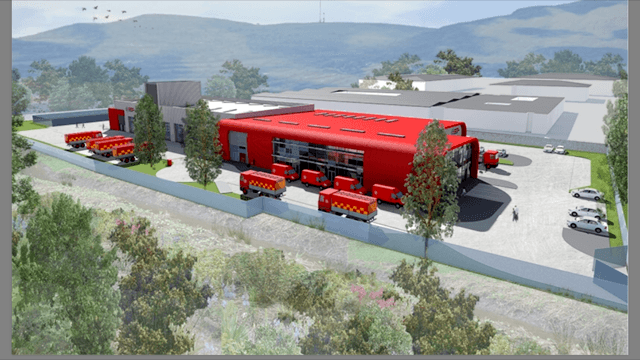False alarms from fire systems are a huge problem. The impact of false alarms varies between sectors, but common themes are:
- Downtime (e.g. manufacturing)
- Disturbance and disruption (e.g. healthcare)
- Damage to reputation (e.g. hospitality sector)
But arguably the greatest threat posed by repeated false alarms is that over time they undermine the integrity of the fire detection and alarm system, and can potentially endanger the lives of the building occupants the system is designed to protect.
What is the typical response to a fire alarm activation?
We have all experienced a scenario of being in a building when the fire alarm sounds and, many will agree, the typical reaction nowadays is to ignore it. The common reaction to fire alarms is indeed reminiscent of Aesop’s fable “The Boy Who Cried Wolf”. I recently attended an Awards dinner in a local hotel during which the fire alarm activated on three occasions within ten minutes, due to a dry ice machine being used. Needless to say, there was no sign of anyone even contemplating evacuation on any of the three occasions. But what if that had been a genuine alarm?
One of the primary reasons occupants fail to respond to fire alarms is a loss of confidence in the system due to false alarms, particularly when there have been more than 3 false alarms in a twelve month period. Continued complacency will only lead to grave consequences, as was the case for Peter and the Villagers in Aesop’s renowned fable.
What are the causes of False Alarms?
Statistics show that the majority of false alarms are “due to apparatus” i.e. the fire detection and alarm system. This could be due to badly designed, or poorly installed, fire detection and alarm system, or a lack of system maintenance. In any event, fire detection and alarm system will typically require replacement after ten years.
But is it simply a case of replacing dated fire alarm equipment that has reached its end of life with like for like technology? Often this will not solve the problem, particularly if it is a case of false alarms being generated due to cooking, manufacturing activities, or in the case of the hospitality sector – steam from hotel room showers, aerosol emissions, or even dry ice in entertainment venues.
What is the typical “solution” to False Alarms?
Traditionally the issue of false alarms has been addressed by one of the following means:
- Isolating zones
- Replacing smoke detectors with heat detectors
- Implementing time delay
- “Double-knock” detection.
Let’s consider each in the context of our Boy Who Cried Wolf story.
- Isolating zones: A particular zone within a building is temporarily isolated to avoid false alarms being generated by deceptive phenomena such as dry ice. Not only does this reduce the detection capabilities of the system, but it introduces a risk that the operator may forget to restore the system to full functionality. Isolation of zones is often initiated at times when there is the highest risk of fire, during times of high population – but ironically the fire detection is reduced as a means of preventing false alarms. In the context of our story, the Villagers ignore the boy who cries wolf but all the while the wolf is approaching, undetected.
- Heat Detectors: Consider next the irony of replacing a smoke detector with a heat detector, perhaps to solve a problem of false alarms within a cooking area. The kitchen area is the highest risk– yet in the event of a fire, by the time a heat detector activates the fire alarm, the occupants of the building will likely have perished from smoke inhalation. My advice would be don’t wait until you have found a dead sheep before confirming the presence of the wolf!
- Time Delays: With time delays, the fire detection and alarm system does not go into full activation for a pre-programmed number of minutes, to allow a fire warden to investigate whether the alarm is genuine. Precious minutes may be lost during this investigative time, and could impact on the safe evacuation of all building occupants. In the context of our fable, the time taken in sending a villager to confirm the presence of the wolf may prove detrimental to the survival of the sheep…
- Double-knock detection – this method requires two sensors to activate before the system will go into full alarm. Will the shepherd be able to protect his flock if he waits until not one but two have fallen victim to the wolf before reacting?
For many years, zone isolations, heat detectors, time delays, and double knock have been the only “solution” to the problem of false fire alarms…until now.
What is the real solution to false alarms?
Now you can go one step further with the level of protection afforded by fire detection and alarm system. Not only can you reduce the number of false alarms but you can eliminate them altogether, thanks to developments in fire detection and alarm technology.
The Siemens Cerberus Pro fire detection and alarm system uses Advanced Signal Analysis (ASA) technology designed specifically with the purpose of eliminating false alarms by offering fast, reliable detection alarm signalling and control. Even in the most complex environments, the intelligent optical detectors work effectively to eliminate false alarms due to steam, aerosols, exhaust fumes, cooking fumes, cigarette smoke, welding smoke, dust, insects, dry ice, and even burnt toast.
Diamond Systems are Northern Ireland’s sole Cerberus Pro partner and offer a genuine No False Alarm Guarantee with their fire detection and alarm system. The No False Alarm Guarantee states that in the event that one the system’s automatic detectors does respond to anything other than real fire phenomena or a fire condition, resulting in the attendance of the Fire and Rescue Services, Diamond Systems will pay up to £500 to cover the cost of disruption including downtime and emergency services penalties (charges have already started in parts of the UK for repeated false alarms).
So with this technology now available in Northern Ireland, you can be sure when you select a Siemens Cerberus Pro fire detection and alarm system from Diamond Systems, your system will not Cry Wolf!
To learn more about our No False Alarm Guarantee and the Siemens Cerberus Pro system click here and you too can eliminate false fire alarms for good.






